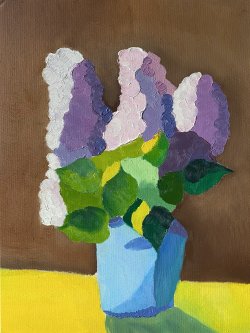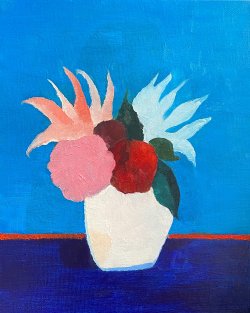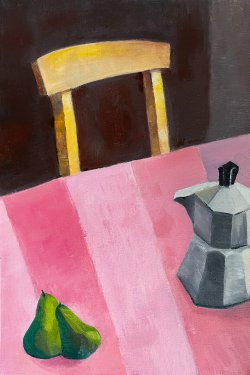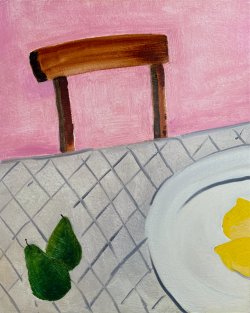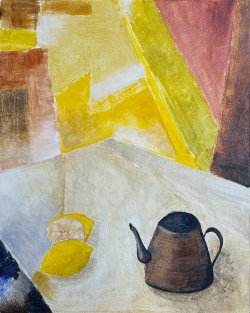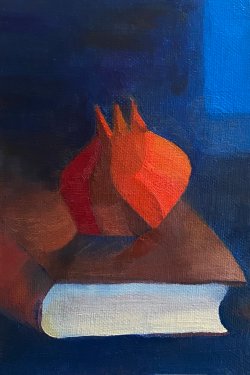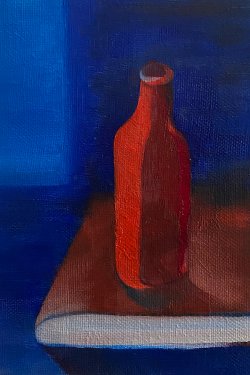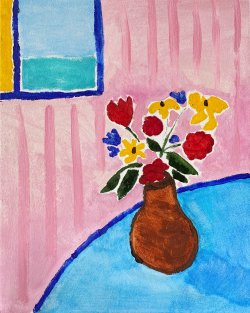The balalaika is a unique and traditional stringed musical instrument. It is instantly recognizable by its triangular body, typically made of wood, and its three strings, although there are variations with six and even four strings. Originating in the 17th century, it's renowned for folk music but also spans classical and popular genres. It has been incorporated into classical compositions, contemporary music, and even popular music genres, adding its distinct timbre to a multitude of musical expressions.
The artist chose this musical instrument because of its cubist shape. To achieve the desired effect, Trubin distorts the object’s shape and perspective. He is primarily interested in the interaction of an object with the surrounding space. Trubin does not reproduce an existing object; he uses the balalaika as an abstract item.
In this artwork objects and shapes together form a single composition built on colors and the interplay of masses and volumes. This is a painting where the Trubin uses visual language of shape, form, color to create a composition which may exist with a degree of independence from visual references in the world.
Moreover, the artwork is built on rhythms, which complicate the author's concept and enhance the perception effect. Rhythm is one of Trubin's main techniques, which he actively uses in his paintings.
Dimensions: 40 cm × 50 cm.



